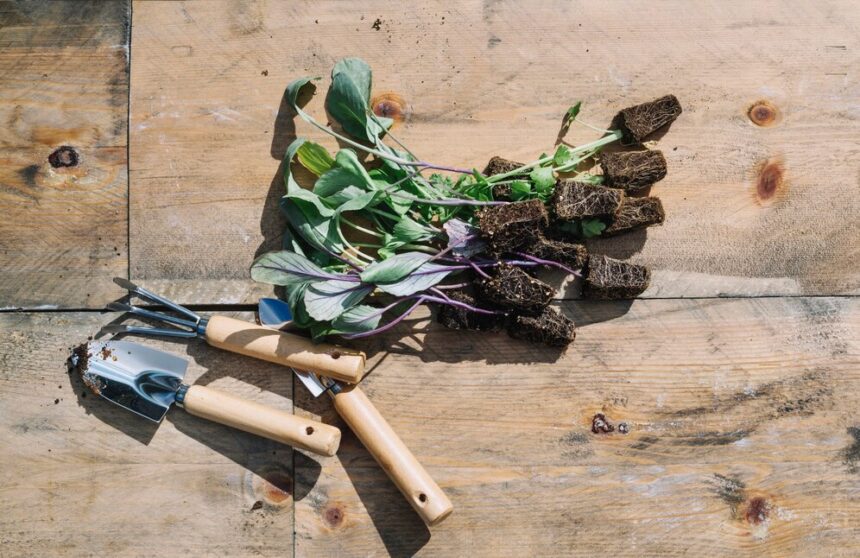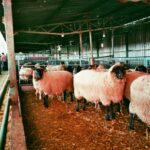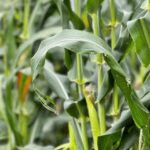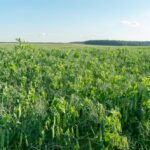Starting a small-scale farm can be a rewarding endeavor, but it comes with its own set of challenges. One of the most important aspects of running a successful farm is having the right tools. Whether you’re growing vegetables, raising livestock, or managing a small orchard, having the proper equipment is crucial for productivity and efficiency. As a small-scale farmer, you don’t need to invest in large industrial machinery, but there are essential tools that will make your work easier and more effective.
In this article, we’ll explore the basic tools every small-scale farmer needs to get started and optimize their farming operations.
1. Hand Tools for Planting and Cultivation
Planting and cultivating the soil are foundational tasks in farming. As a small-scale farmer, you need to have reliable hand tools to prepare your land, plant your crops, and maintain healthy soil conditions.
a) Shovel or Spade
A shovel or spade is one of the most essential hand tools for any farmer. It is used for digging holes, turning soil, and transplanting crops. A good quality spade with a sturdy handle is perfect for working in garden beds and small plots.
- Key Uses: Digging, transplanting, and soil aeration.
- Tip: Choose a shovel with a comfortable grip to prevent hand fatigue.
b) Hoe
A hoe is indispensable for maintaining the soil and controlling weeds. It is used to break up compacted soil, aerate the ground, and remove weeds before they take over your garden.
- Key Uses: Weeding, soil loosening, and surface cultivation.
- Tip: A long-handled hoe can reduce the need to bend over, making it easier on your back.
c) Rake
A rake is used for leveling soil, gathering leaves, and breaking up clumps of soil. It helps ensure an even surface for planting seeds or transplanting seedlings.
- Key Uses: Soil leveling, leaf collection, and debris management.
- Tip: A lightweight, sturdy rake with wide teeth is ideal for spreading compost or mulch.
d) Trowel
A trowel is a small hand tool that is perfect for digging small holes, planting seedlings, and transferring soil. It is particularly useful for planting individual plants or for working in containers or raised beds.
- Key Uses: Planting small plants and flowers, transplanting seedlings.
- Tip: A trowel with a curved blade makes it easier to dig and maneuver in tight spaces.
2. Tools for Irrigation and Watering
Water is a crucial resource for any farm, and ensuring that your crops get the right amount of water is key to their health and productivity. Depending on the scale of your operation, there are different tools to help you manage water efficiently.
a) Watering Can
A simple watering can is one of the most versatile tools for small-scale farmers. It allows you to manually water plants, especially in areas that are hard to reach with a hose.
- Key Uses: Watering individual plants, seedlings, and small garden beds.
- Tip: Look for a watering can with a long spout for precision watering.
b) Garden Hose
A garden hose is essential for larger watering tasks. You can attach various nozzles to control water flow, ensuring that each plant gets the right amount of water. This tool is especially helpful for larger garden beds, rows of crops, and livestock areas.
- Key Uses: General watering of garden beds and crops.
- Tip: Invest in a hose that is durable and resistant to kinks for long-lasting use.
c) Drip Irrigation System
If you’re looking for an efficient, water-saving solution, a drip irrigation system is a smart investment. This system delivers water directly to the base of each plant, reducing water waste and minimizing the risk of disease.
- Key Uses: Efficient watering of crops, especially in dry areas.
- Tip: Drip irrigation systems can be installed in garden rows or raised beds for optimal water usage.
3. Tools for Harvesting and Pruning
Once your crops are grown and ready for harvest, having the proper tools for collecting and maintaining plants is crucial. Harvesting tools help ensure that the crops are collected at the right time, while pruning tools allow you to keep plants healthy and productive.
a) Pruning Shears
Pruning shears, or secateurs, are essential for trimming dead or damaged branches from plants, such as fruit trees, bushes, and vines. Regular pruning promotes healthy growth and can increase fruit production.
- Key Uses: Cutting back plants, removing dead or diseased branches, and shaping plants.
- Tip: Choose ergonomic pruning shears to reduce strain on your hands and wrists.
b) Sickle or Harvesting Knife
A sickle or harvesting knife is ideal for cutting through tall grass, weeds, or harvesting crops like grains, herbs, or small vegetables. It can also be useful for collecting plants like garlic or onions.
- Key Uses: Harvesting crops, cutting grass, and weeding.
- Tip: Look for a sickle with a sharp, curved blade for a smooth cutting action.
c) Wheelbarrow or Garden Cart
A wheelbarrow or garden cart is a must-have for moving harvested crops, soil, compost, and tools around your farm. It saves time and reduces strain on your body, especially when carrying heavy loads.
- Key Uses: Moving soil, compost, plants, and harvested crops.
- Tip: Choose a wheelbarrow with a sturdy frame and large wheels to handle rough terrain.
4. Soil Testing and Fertilizing Tools
Healthy soil is the foundation for a successful farm. Soil testing tools help you monitor the pH and nutrient levels of your soil, while fertilizer applicators ensure that your crops receive the nutrients they need.
a) Soil Tester
A soil tester allows you to measure the pH and nutrient content of your soil, helping you determine what amendments are needed to improve soil health. Regular soil testing helps optimize fertilizer usage and ensures that plants receive the nutrients they need.
- Key Uses: Measuring soil pH, nutrient levels, and soil composition.
- Tip: Invest in a digital soil tester for accurate and easy readings.
b) Broadcast Spreader
A broadcast spreader is used for evenly distributing granular fertilizers or seeds across your fields or garden beds. It helps ensure that your crops receive consistent coverage of nutrients or planting materials.
- Key Uses: Spreading fertilizer, seeds, and lime evenly across the soil.
- Tip: Look for a spreader that is adjustable to control the amount of material being spread.
5. Storage and Organization Tools
Keeping your tools organized and well-maintained will improve your efficiency on the farm. A well-organized storage system also ensures that your tools remain in good condition for years to come.
a) Tool Shed or Storage Box
Having a secure and organized place to store your tools is essential for preserving their longevity. A tool shed or sturdy storage box will protect your equipment from the elements and keep everything within easy reach.
- Key Uses: Storing tools, fertilizers, and other farming equipment.
- Tip: Opt for a tool shed with good ventilation to prevent rusting and damage.
Starting a small-scale farm requires the right tools to ensure efficiency and productivity. While some tools are essential for planting, irrigation, and cultivation, others help with harvesting, pruning, and maintaining the overall health of your crops. By investing in high-quality hand tools, irrigation systems, and storage solutions, small-scale farmers can optimize their operations, increase yields, and reduce the amount of time spent on manual labor.
With these basic tools in place, you’ll be well-equipped to manage your farm successfully, whether you’re growing vegetables, herbs, or raising livestock. Remember, the right tools not only make farming easier—they can also make the difference between a profitable season and a challenging one.
Join 'Farmers Mag' WhatsApp Channel
Get the latest Farming news and tips delivered straight to your WhatsApp
CLICK HERE TO JOIN






